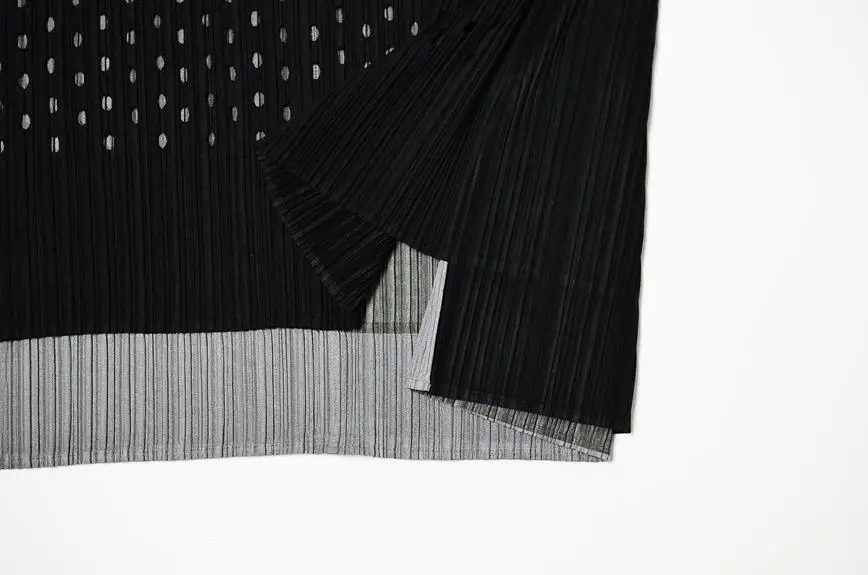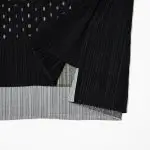So, you're looking for a gentle way to revitalize your synthetic wig? Look no further! In this guide, you'll discover fabric-friendly tips for boiling a synthetic wig to restore its luster and shape.
Whether you're new to wig maintenance or a seasoned pro, these techniques will help you master the art of boiling synthetic wigs with ease. From choosing the right wig for boiling to properly preparing and cooling it, you'll learn the essential steps to keep your wig looking its best.
Let's get started on giving your synthetic wig the care it deserves!
Key Takeaways
- Choose a wig labeled as heat-resistant for boiling and made from heat-friendly synthetic materials.
- Fill a large pot with enough warm water to fully submerge the wig and bring it to a gentle boil.
- Place the submerged wig in the pot over medium heat for 10-15 minutes, being careful not to overcook the fibers.
- After boiling, allow the wig to cool in the water for 5-10 minutes, then gently pat it dry with a towel and let it air dry in a well-ventilated area.
Choosing the Right Wig for Boiling
Choose a synthetic wig that's specifically labeled as heat-resistant for boiling. When selecting a wig for boiling, it's crucial to pay attention to the fabric type. Look for wigs made from heat-friendly synthetic materials such as kanekalon or Toyokalon. These materials are designed to withstand high temperatures without getting damaged. It's important to avoid wigs made from regular synthetic fibers, as they can melt or become irreparably damaged when exposed to boiling water.
When shopping for a wig to boil, check the product description or label to ensure that it's heat-resistant and suitable for boiling. Some wigs are explicitly marketed as being safe for heat styling, including boiling, and may be labeled as 'heat-friendly,' 'heat-resistant,' or 'boilable.' Additionally, consider the wig's construction and whether it's designed to withstand heat styling processes. Wigs with open wefting or lightweight caps are generally more suitable for boiling, as they allow for better heat distribution and water penetration.
Preparing the Boiling Water
To prepare the boiling water, follow these steps:
- Fill a large pot with water, ensuring there's enough to fully submerge the wig without overflowing.
- Bring the water to a gentle boil over medium heat. Avoid using water that's too hot, as it can damage synthetic wig fibers. Aim for a temperature that's hot enough to create steam but not boiling vigorously.
- Consider the material of the wig when preparing the water. For synthetic wigs, use water that's warm but not boiling to prevent any potential damage. If the wig is made of heat-resistant synthetic fibers, you can use slightly hotter water, but always refer to the manufacturer's guidelines.
- Once the water reaches the appropriate temperature, gently submerge the wig into the water, ensuring that it's fully covered.
- Use a gentle stirring motion to help the wig evenly absorb the warm water.
Boiling Process for Synthetic Wigs
Start by placing the pot of water with the submerged wig on the stovetop over medium heat. Once the water reaches a gentle boil, set a timer for 10-15 minutes. It's crucial to monitor the process closely to avoid overcooking the wig fibers. After the designated time has passed, carefully remove the pot from the heat source and allow the wig to cool in the water for another 5-10 minutes. Then, gently lift the wig out of the water, being cautious not to stretch or wring the fibers. Finally, lay the wig on a clean towel and gently pat it dry to remove excess water before proceeding with styling.
To ensure proper care for your synthetic wig, it's essential to understand the maintenance techniques that will keep it looking its best. The table below provides a summary of key maintenance tips for synthetic wig care:
| Maintenance Tips | Description |
|---|---|
| Washing | Use a wig shampoo and cold water to gently cleanse the wig, avoiding rubbing or twisting. |
| Conditioning | Apply a wig conditioner, focusing on the ends, then rinse thoroughly with cold water. |
| Drying | Gently pat the wig with a towel and allow it to air dry on a wig stand or a can of hairspray. |
| Brushing | Use a wide-tooth comb or wig brush to detangle, starting from the ends and working upward. |
| Styling | Only use heat-styling tools specifically designed for synthetic wigs to avoid damage. |
Cooling and Drying the Wig
After boiling the synthetic wig for the designated time, carefully remove the pot from the heat source and allow the wig to cool in the water for another 5-10 minutes. Once the wig has cooled, it's time to focus on the drying process.
Here are some fabric-friendly tips for drying your synthetic wig:
- Pat the wig gently with a soft, absorbent towel to remove excess water. Avoid rubbing vigorously, as this can cause damage to the fibers.
- Place the wig on a wig stand or a clean, dry towel in a well-ventilated area away from direct sunlight and heat sources. Avoid using a hairdryer or any direct heat to dry the wig, as high temperatures can damage the synthetic fibers.
- Allow the wig to air dry completely before styling or wearing it. This gentle drying method will help maintain the integrity of the wig's fibers and ensure it retains its shape and style.
Tips for Maintaining Wig Fabric Quality
Once the wig has air-dried completely, it's essential to implement regular maintenance practices to preserve the fabric quality and extend the lifespan of your synthetic wig.
Since synthetic wigs are made from various materials such as nylon, acrylic, or polyester, it's important to understand the heat sensitivity of the wig material. Avoid exposing the wig to high temperatures, such as near ovens or open flames, as excessive heat can damage the fibers and alter the texture of the wig.
When it comes to fabric care, use specially formulated wig shampoos and conditioners to gently cleanse and moisturize the fibers. Avoid using regular hair care products as they may contain ingredients that are too harsh for synthetic wig material. Additionally, brushing your wig regularly with a wide-tooth comb or a brush specifically designed for wigs can help prevent tangles and maintain the fabric quality.
In terms of wig maintenance, store your synthetic wig on a wig stand or a mannequin head to help retain its shape and prevent matting. Keep the wig away from direct sunlight when not in use to avoid color fading and fiber damage.
Frequently Asked Questions
Can I Boil My Synthetic Wig if It Has Any Embellishments or Decorations on It?
You should be cautious if your synthetic wig has embellishments or decorations when considering boiling it. Take care to protect these features by using gentle washing methods and avoiding direct heat.
How Often Can I Boil My Synthetic Wig Before It Starts to Damage the Fabric?
You should be cautious about boiling your synthetic wig too often. Frequent boiling can damage the fabric integrity and lead to heat damage. It's important to find a balance in synthetic wig care to maintain its quality.
Can I Use Any Type of Shampoo or Conditioner When Cooling and Rinsing the Wig After Boiling?
When cooling and rinsing your synthetic wig after boiling, it's crucial to choose the right products to prevent damage. Using a gentle, sulfate-free shampoo and a silicone-free conditioner will help maintain the fabric's integrity.
Is It Safe to Use Heat Styling Tools on a Synthetic Wig After Boiling It?
Yes, it's safe to use heat styling tools on a synthetic wig after boiling it. Just ensure the wig is completely dry before styling. Always use low heat settings to maintain fabric safety and prevent damage during heat styling.
Will Boiling My Synthetic Wig Affect the Color or Texture of the Fabric?
Boiling your synthetic wig can affect the color and texture of the fabric. To maintain color, use fabric-friendly care and avoid excessive heat. For texture maintenance, ensure the wig's heat resistance and follow proper care instructions.
- The History and Evolution of Chamois Fabric - June 22, 2025
- Chamois Fabric on Wikipedia: What You Need to Know - June 22, 2025
- How to Pronounce Chamois Fabric Correctly - June 22, 2025




